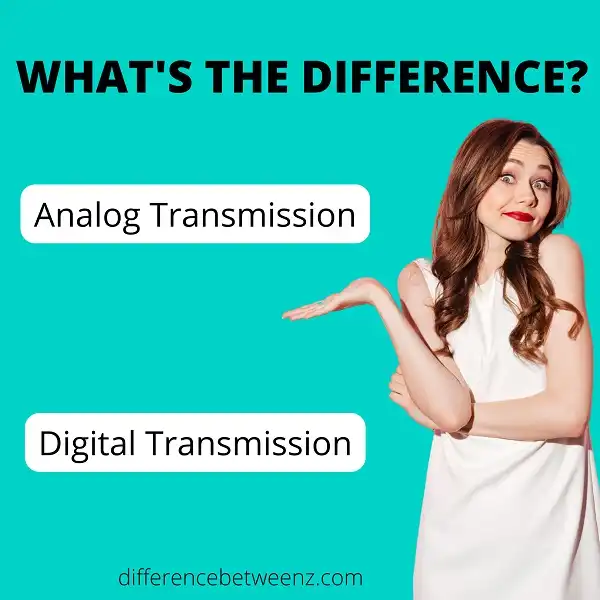Most people are familiar with the terms ‘analog’ and ‘digital,’ but may not know the difference between the two. In short, analog transmission is a continuous signal, while the digital transmission is a series of 1s and 0s. The advantage of digital transmission is that it can be processed by computers, making it ideal for things like email and texting. For audio or video, however, analog transmission is often considered to be superior in quality.
What is Analog Transmission?
Analog transmission is a method of conveying information using a continuous signal in which the amplitude of the signal varies in proportion to the amount of information being conveyed. Analog signals are typically used for audio and video applications. In an analog signal, the amplitude of the signal corresponds to the intensity of the information being conveyed. For example, in an analog audio signal, the amplitude of the signal represents the loudness of the sound being reproduced. Analog video signals are used to represent moving images. The amplitude of the Analog video signal varies according to the brightness of the image being reproduced. Analog transmission is sometimes referred to as linear transmission.
What is Digital Transmission?
Digital Transmission is the process of sending digital data over a physical medium. Digital data is a representation of information in a binary form, where each bit can have one of two possible values. The most common type of digital data is digital audio, which can be found on CDs and DVDs. Digital Transmission systems can be designed to transmit multiple digital streams simultaneously, or they can be designed to provide a single stream for a specific purpose. Digital Transmission systems are often used in conjunction with other communication systems, such as the telephone system or the Internet.
Difference between Analog and Digital Transmission
Analog and digital transmission are two different ways of sending information. The analog transmission uses a continuous signal, while digital transmission uses a series of discrete pulses. Analog signals are typically used for audio information, while digital signals are used for data. Analog transmission is subject to noise and distortion, while the digital transmission is not. Digital transmission is also more resistant to interference than analog transmission. Analog signals can be converted to digital signals using a process called digitization.
Conclusion
So, what is the difference between analog and digital transmission? The analog transmission sends a continuous signal which gradually weakens as it travels. Digital transmission converts an analog signal into binary code, which can be sent over a network without any loss in quality. In most cases, digital transmissions are superior to analog transmissions because they are less likely to experience interference or degradation. However, there are some applications where analog transmission is still preferable- for example when dealing with high-fidelity audio or video signals.


